Bike Corral Design for Onstreet Bike Parking
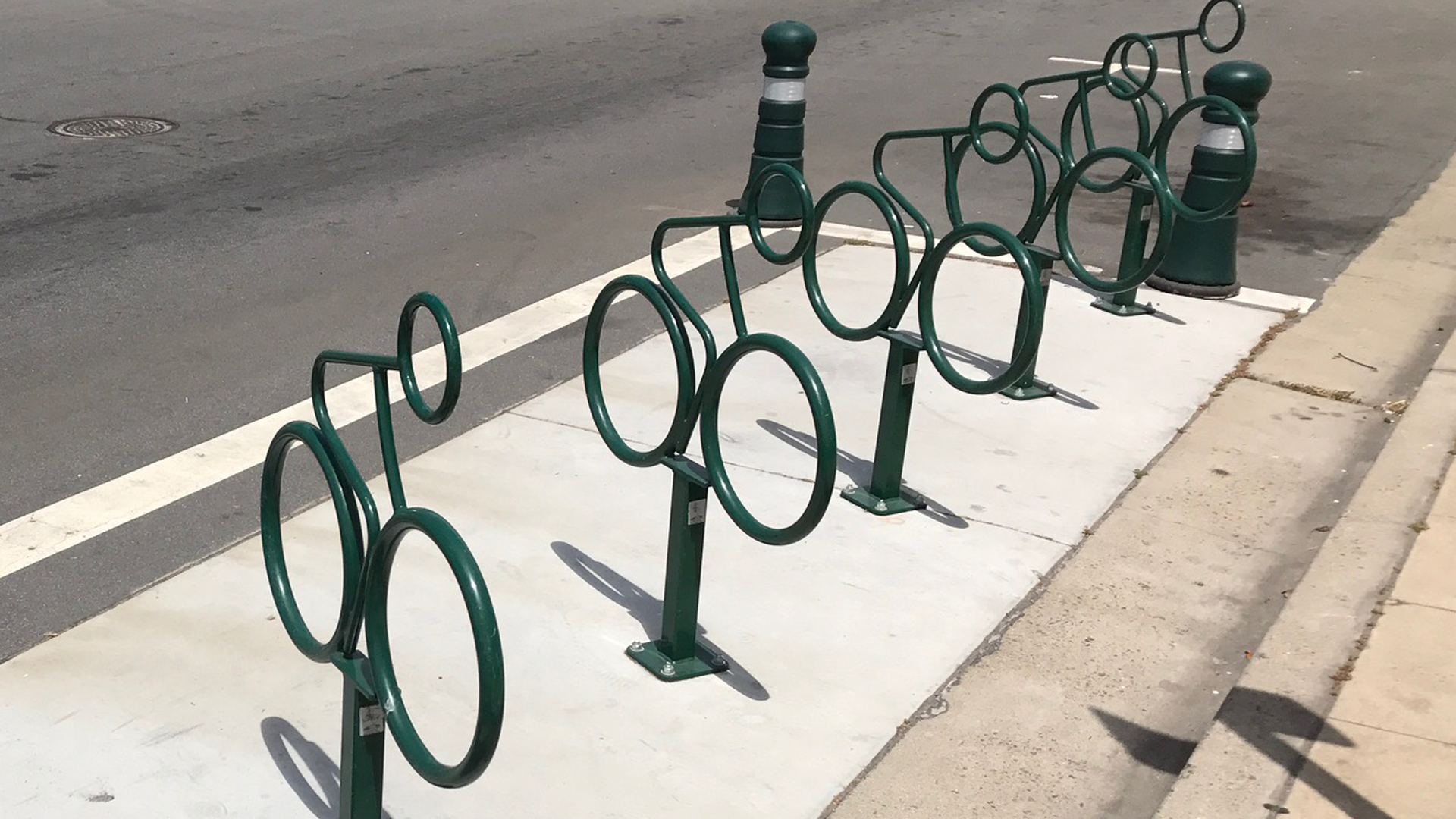
There are plenty of reasons for adding on-street bike parking.
Not only is it a great way to increase the availability of short-term bike parking spaces without taking up sidewalk space, but it has also been shown to have a positive economic impact as well.
Let's now move from why install on street bike corrals to how. Here are the considerations you’ll want to address first.
Planning
After you’ve made the decision to move forward with creating a space for on-street bike storage, the biggest challenge to tackle is where? Consider these factors to locate the best place to put up bike corrals.
Feedback from Businesses or Business Associations
If there were a chance that more customers could park right in front or near their store, many businesses would be open to that opportunity.
Working with business owners on location selection opens the dialogue for the business to possibly fund part, or all, of the corral. Maintenance agreements could also be reached that outline how will the corral be maintained.
Convenience
The placement of bicycle parking corrals will likely be tied to popular locations. The corral should then be located as close to an entrance as possible or placed where it can benefit multiple businesses in the same area.
Although these bike parking spaces can benefit several near-by businesses, know that most people are unlikely to park their bicycle more than 100 feet from their destination. If there are additional businesses or points of interests beyond this distance, consider also adding corrals close to these locations. Or they may not receive the benefit.
Street Corners
Favoring street corners as a placement for corrals is a good practice because of the improved visibility. It will be easier for cyclists to see as they approach. Especially compared to if it were located between parked cars.
Vehicles and pedestrians can also more easily see cyclists leaving the corral.
Additionally, vehicles will have improved sightlines to other traffic at intersections. Something that can be significantly reduced when large vehicles are parked on the corners of streets.
Main Travel Corridors Should Also Be Favored
It’s highly recommended that on-street parking be placed on streets that carry higher volumes of traffic. Cyclists will likely already be on these paths and will easily see the bicycle parking area.
Placing them on side streets could increase the distance from the entrance or reduce their visibility. To the point where they’re ignored and bicycles end up on the sidewalk locked to street signs, fencing, site furniture or other items not intended for parking bicycles.
How to Create On-street Bike Parking
It takes more than just a couple of racks to create functional bicycle parking on the street. Elements of a bike corral should include:
- Bicycle racks
- Dividers that establish the parking area
- Signage to indicate the presence of bicycle parking
Selecting On-street Bike Racks
Because they will likely be installed on a street made of asphalt, select bike racks on rails.
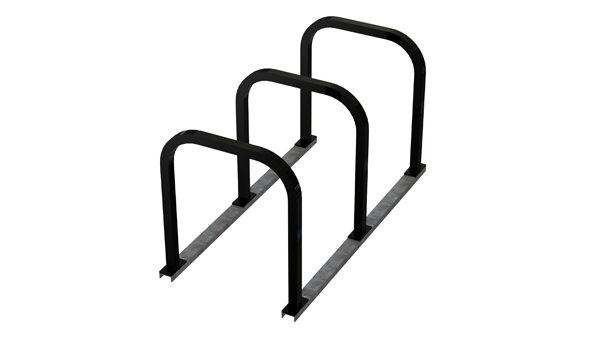
Surface mounting racks to asphalt is not recommended. They are too easily removed by would-be thieves and vandals.
Further, opt for racks that are angled at 60 degrees. Reason being, this reduces the depth of a 6-foot bicycle to five feet. The additional foot creates a larger buffer between the bicycle and traffic on the street.
The tradeoff is that when bicycles are parked angled to the curb, fewer bicycles can be parked in the space.
To accommodate cargo bicycles or those with trailers, orienting parallel to the curb will offer enough space for these to be parked.
Delineating the Bike Parking Area
When delineating the bike parking areas visibility should be a top priority. This makes it easier for cyclists to locate. It can also act as a visual deterrent to motorists using the road where the parking will be placed.
There are several demarcation solutions available. Again, follow a city’s codes first. Then implement one or more of the following to best fit your situation.
Paint
The entire area that is to be reserved for parking bicycles can be painted. This makes it easy to identify for cyclists and motorists. Minimally, a symbol or some other marking should be put on the ground to alert the presence and intended use of the space.

Opt for bright colors when possible to highlight the space reserved for bike parking.
Physical Barriers
Erecting physical barriers around the bicycle parking on the street further increases its visibility and creates a visual deterrent.
Depending on the type of barrier used, they can even provide additional protection and safety of users. But there are trade-offs based on the type you use.
Items like parking stall delineators are not permanent and easy to install.
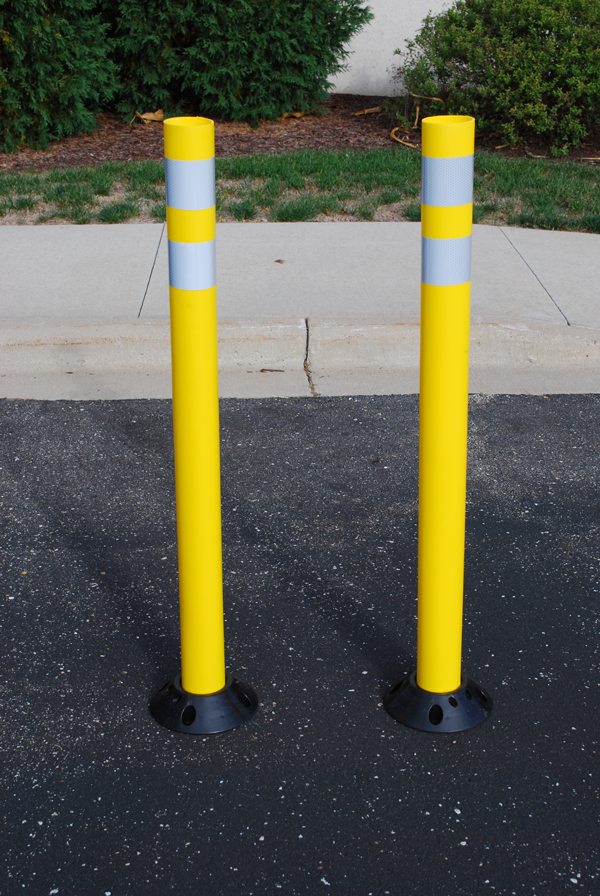
Their placement can also easily be changed for road maintenance or to expand the bicycle parking area. Typically these come in bright colors and include reflective elements for enhanced visibility during darker hours.
Rubber or concrete curbs are another solution that not only outlines the on-street bike parking but also provides an initial level of protection. Cars entering or leaving adjacent parking spots could be stopped from fully entering the bike parking when their tires hit the curb.
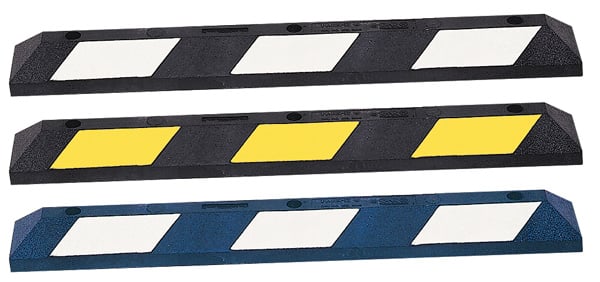
When utilizing curbs, do not fully encase the area. This barrier makes it more difficult to enter and more importantly, leave the parking area.
Make sure to leave openings for bicycles to travel through.
To increase the protection of cyclists when parking on the street, look to use bollards, concrete pillars, and walls.
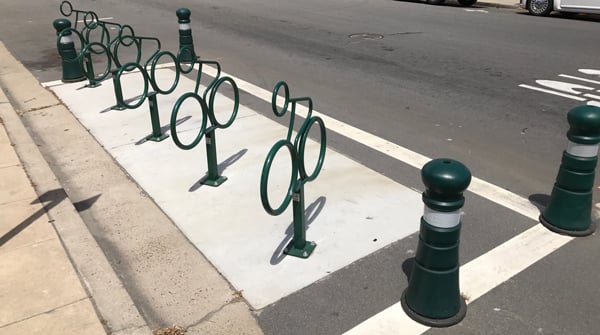
These are more permanent solutions and will require additional modification to the road to install and remove, if necessary.
Bike Corral Design
The design of on-street bike parking or bike corrals will differ between cities based on a municipality’s ordinances and general goals. First and foremost, make sure to follow your city’s codes.
Often though, a bike corral takes the place of an auto parking stall. This would put the length between 18 and 20 feet, and it would be 8 to 10 feet wide.
Then the orientation of the racks should be determined. Perpendicular to the curb or at 60 degrees - to allow a greater buffer area from traffic.
When placing racks perpendicular to the curb, as a general guideline, the center of each rack should be spaced 36 inches apart. This reduces the chance of handlebar conflicts and gives riders ample room to access their bicycle from the side for locking/unlocking.
These racks should be set back from the curb 30 inches to allow the entire bicycle to be parked on the street and not come up on the sidewalk.
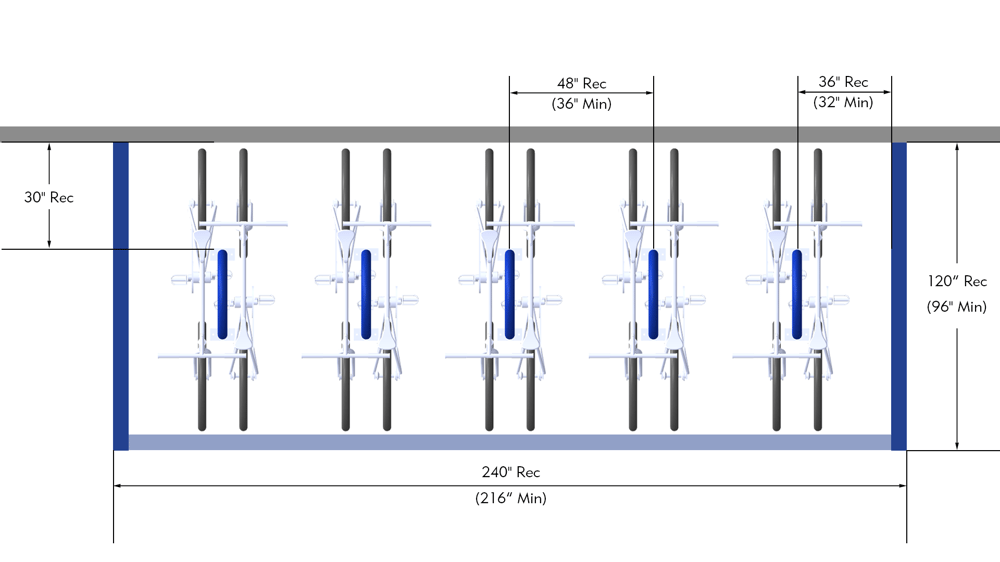
For an angled orientation, rack setback can be 24 inches from the curb. The leg of the rack closest to the curb should be spaced at a recommended distance of 48 inches or 36 inches minimally.

In addition to the necessary space to park bicycles, it is also recommended that a 5-foot maneuvering zone be integrated on one or both ends of the bike parking area. This allows cyclists to get up to speed when entering traffic, as well as easy entry to the parking area.
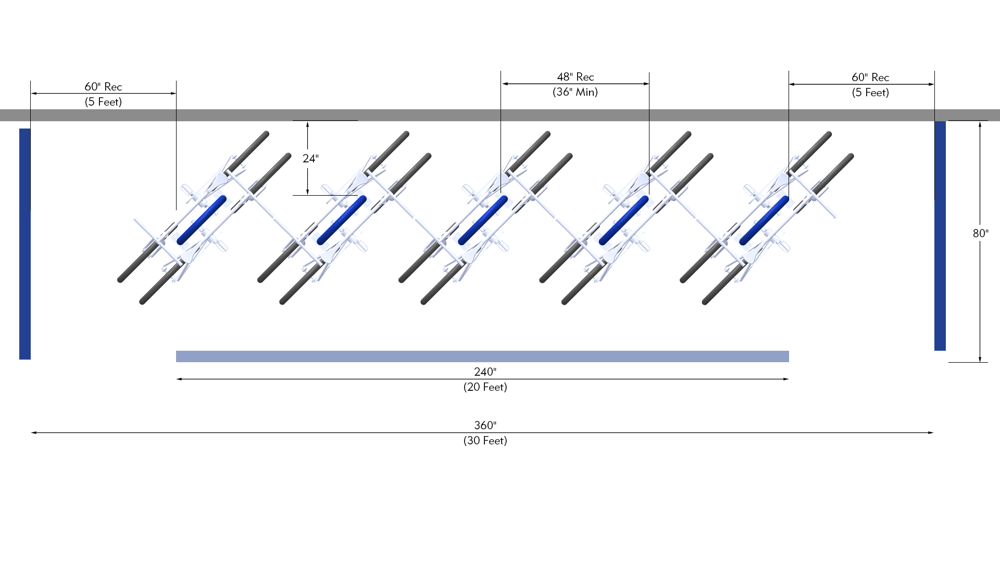
This has been a common practice championed by the standards for City of Portland bike corrals.
Manufactured Bike Parking Corrals
An alternative option for creating on-street bike parking is to use a manufactured bicycle parking corrals. These solutions provide the necessary elements including barriers, rack elements, and markings, in a single unit.
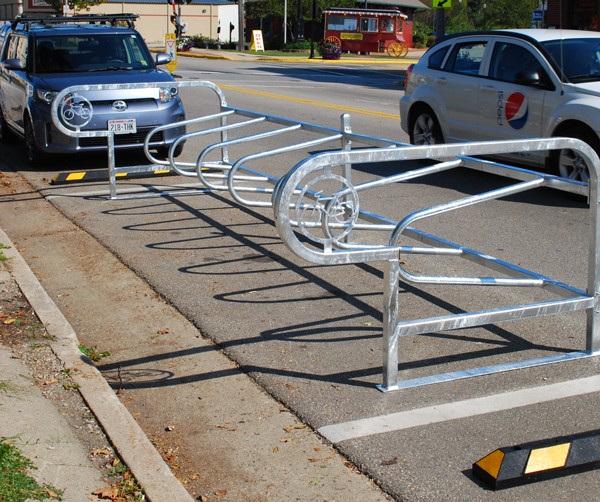
Most fit in the space of a single auto parking spot and one corral can park up to 14 bicycles.
Related Resources
- [Shop] Bike Corrals
- [Article] Standard Bike Parking Dimensions
- [Article] Writing a Rock Solid Bike Rack Specification

